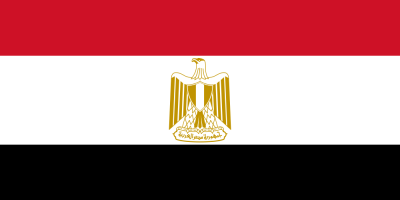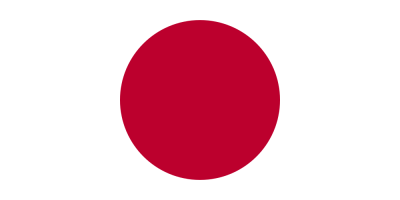Kazakhstan flag color codes features a vibrant blue background with golden artistic motifs and a national emblem at the hoist. This distinctive design incorporates the hues light blue, gold, and white, each representing important elements of Kazakhstan culture. This article will provide the specific HTML hex, RGB, Pantone, HSL, CMYK, HWB, and NCOL color codes that compose the light blue, yellow gold, and white on the Kazakhstan flag. Whether you want to integrate the colors into a graphic design, reproduce the flag itself, or simply match the official tones for a project, having the precise Kazakhstan flag color codes is essential. With the color format values listed here, accurately applying the patriotic light blue, shining gold, and crisp white shades of the Kazakhstan flag is simple for any application.
Table of Contents
What are the colors of Kazakhstan flag?
The three colors in the Kazakhstan flag are:
- Light blue – The background color of the flag is a light sky blue. This covers the majority of the flag.
- Gold/Yellow – The artistic design emblazoned on the left side of the flag is in a golden yellow tone. This includes the sun motif.
- White – The national emblem on the hoist end of the flag is white, outlined in gold.
So in summary, the national flag of Kazakhstan contains light blue, golden yellow, and white. The light blue conveys peace and open skies, the yellow represents the bountiful wheat fields, and the white symbolizes peace and purity.
Kazakhstan flag color codes & Color Names:
BLUE
| Color Model | Value |
|---|---|
| HTML | #00A1DE |
| HEX | 00A1DE |
| RGB | 0, 161, 222 |
| Pantone | Process Blue C |
| HSL | 198, 100%, 43% |
| CMYK | 100%, 1%, 0%, 13% |
| HWB | 198, 0%, 13% |
| NCOL | 205, 21, 87 |
GOLDEN
| Color Model | Value |
|---|---|
| HTML | #FFD100 |
| HEX | FFD100 |
| RGB | 255, 209, 0 |
| Pantone | 116 C |
| HSL | 49, 100%, 50% |
| CMYK | 0%, 18%, 100%, 0% |
| HWB | 49, 0%, 0% |
| NCOL | 40, 12, 95 |
RED
| Color Model | Value |
|---|---|
| HTML | #D21034 |
| HEX | D21034 |
| RGB | 210, 16, 52 |
| Pantone | 186 C |
| HSL | 351, 85%, 44% |
| CMYK | 0%, 92%, 75%, 18% |
| HWB | 351, 18%, 18% |
| NCOL | 0, 83, 24 |
What is the meaning of colors in the Kazakhstan flag?
The symbolic meanings behind the colors of the Kazakhstan flag are:
Light Blue: The light blue background represents the peaceful skies and open spaces of Kazakhstan. It also symbolizes the Turkic heritage of the Kazakhs.
Golden Yellow: The golden yellow emblem to the left side signifies the abundance of wheat and grain that Kazakhstan produces. It represents prosperity.
White: The white in the national emblem at the hoist stands for peace, virtue, and purity. It also indicates the desire for peace and harmony.
In summary:
- Light Blue – Peaceful skies, open spaces, Turkic heritage
- Golden Yellow – Abundance of wheat and grains, prosperity
- White – Peace, purity, virtue and hope for harmony
The flag’s light blue, gold, and white colors reflect values of pride, bounty, serenity and nobility important to Kazakh national identity since gaining independence in 1991. The meanings behind the colors speak to Kazakhstan’s core vision as a nation.
Explore More Flag Colors:
FAQs: Frequently Asked Questions:
What is the religion of Kazakhstan?
Kazakhstan is a diverse country with a population that practices various religions. The constitution of Kazakhstan guarantees religious freedom, and the country is known for its historical and cultural diversity. The major religions in Kazakhstan include:
Islam: Islam is the predominant religion in Kazakhstan, and the majority of the population adheres to Sunni Islam. The practice of Islam in Kazakhstan is influenced by both traditional Central Asian practices and the Hanafi school of Sunni Islam.
Russian Orthodoxy: A significant minority of the population, particularly among the ethnic Russian community, practices Russian Orthodoxy. The Russian Orthodox Church has a presence in Kazakhstan.
Other Christian Denominations: There are also communities of other Christian denominations, including Protestantism and Catholicism. Various Christian churches operate in Kazakhstan.
Is Kazakhstan a part of Russia?
No, Kazakhstan is an independent and sovereign country. It is not a part of Russia. Kazakhstan gained its independence from the Soviet Union on December 16, 1991, following the dissolution of the Soviet Union. Since then, Kazakhstan has been a separate and sovereign nation with its own government, institutions, and foreign policy.
Kazakhstan is the world’s largest landlocked country and is located in Central Asia, sharing borders with Russia to the north, China to the east, Kyrgyzstan, Uzbekistan, and Turkmenistan to the south, and the Caspian Sea to the west.
Is Kazakhstan a part of Asia or Europe?
The majority of Kazakhstan is located in Asia, making it the world’s largest landlocked country in Central Asia. The greater part of Kazakhstan lies to the east of the Ural River, which traditionally forms the boundary between Europe and Asia. Therefore, the predominant portion of Kazakhstan is considered part of the Asian continent.
However, a smaller portion of Kazakhstan lies to the west of the Ural River, extending into Eastern Europe. This western part of Kazakhstan is sometimes referred to as part of the country’s European region. The division between the Asian and European parts of Kazakhstan is somewhat arbitrary and is based on geographical features rather than cultural or historical factors.
What Kazakhstan is known for?
Kazakhstan is known for several notable aspects, including its diverse landscape, cultural heritage, and economic contributions. Here are some key things Kazakhstan is known for:
Eurasian Geography: Kazakhstan is the world’s largest landlocked country, spanning both Europe and Asia. The country has a diverse landscape that includes vast steppes, deserts, mountains, and the Caspian Sea.
Baikonur Cosmodrome: Baikonur, located in Kazakhstan, is the world’s first and largest operational space launch facility. It has played a crucial role in space exploration, serving as the launch site for Yuri Gagarin, the first human in space.
Nomadic Heritage: Kazakhstan has a rich nomadic heritage, and traditional nomadic practices are still observed in some regions. The Kazakh people historically engaged in nomadic herding and horsemanship.
Cultural Diversity: The country is home to a diverse range of ethnic groups, including Kazakhs, Russians, Uzbeks, Uighurs, and others. This diversity contributes to a rich cultural tapestry.
Kazakh Eagle Hunting: Eagle hunting is a traditional form of hunting that involves trained golden eagles. The practice is deeply rooted in Kazakh culture and is showcased in festivals and events.
Oil and Natural Resources: Kazakhstan is rich in natural resources, particularly oil and gas. The energy sector plays a significant role in the country’s economy.
Astana/Nur-Sultan: The capital city was known as Astana until 2019 when it was renamed Nur-Sultan in honor of Nursultan Nazarbayev, the country’s first President. The city is known for its futuristic architecture and urban development.
Lake Balkhash: One of the largest lakes in Central Asia, Lake Balkhash, is partially located in Kazakhstan. It is known for its unique combination of freshwater and saltwater.
Mountains and Nature Reserves: Kazakhstan is home to the Tian Shan and Altai mountain ranges, offering stunning landscapes and outdoor recreation opportunities. The Charyn Canyon and Altai Tavan Bogd National Park are popular natural attractions.
Is Kazakhstan rich or poor?
Kazakhstan is classified as an upper-middle-income country by the World Bank. It has experienced significant economic development since gaining independence from the Soviet Union in 1991. The country has abundant natural resources, including oil, gas, minerals, and agricultural land, which have contributed to its economic growth.
Key factors contributing to Kazakhstan’s economic status include:
Natural Resources: Kazakhstan is a major producer of oil and natural gas, and these resources play a crucial role in the country’s economy. The energy sector has attracted significant foreign investment.
Economic Diversification: In addition to the energy sector, Kazakhstan has made efforts to diversify its economy. Industries such as mining, agriculture, manufacturing, and services contribute to economic activity.
Strategic Location: Kazakhstan’s geographical location at the crossroads of Europe and Asia has contributed to its role as a transit and logistics hub.
Is Kazakhstan good for MBBS?
Kazakhstan has become a popular destination for international students, including those pursuing a degree in Medicine (MBBS). Several universities in Kazakhstan offer medical programs, and there are certain factors that make Kazakhstan a favorable choice for some students:
Affordability: The cost of education in Kazakhstan, including medical programs, is often more affordable compared to many Western countries. Tuition fees and living expenses in Kazakhstan can be relatively lower.
English-Medium Programs: Some universities in Kazakhstan offer medical programs in English, making it more accessible for international students who may not be fluent in the local languages (Kazakh or Russian).
Quality Education: Many medical universities in Kazakhstan are recognized for providing quality education. Some universities may have partnerships with international institutions, and their programs may meet international standards.
Cultural Diversity: Kazakhstan is known for its cultural diversity, and international students may find a welcoming and multicultural environment. Exposure to different cultures can enrich the educational experience.
Modern Facilities: Some universities in Kazakhstan have modern facilities and infrastructure, providing students with access to well-equipped laboratories, libraries, and other resources.
However, before deciding to pursue MBBS in Kazakhstan, it’s important for prospective students to thoroughly research and consider the following:
Accreditation: Ensure that the medical program and the university are accredited by the relevant education authorities and medical boards.
Recognition: Check the international recognition of the medical degree offered by the university. Graduates should be eligible to practice in their home countries or other desired locations.
Language of Instruction: Confirm the language of instruction for the medical program. While some programs are offered in English, others may be in Kazakh or Russian.
Licensing Requirements: Understand the licensing requirements for medical practice in your home country and ensure that the degree obtained in Kazakhstan meets those requirements.
Is Kazakhstan a good place to live?
Here are some factors to consider when evaluating whether Kazakhstan is a suitable place to live:
Cultural Diversity: Kazakhstan is known for its cultural diversity, with influences from various ethnic groups. The country has a rich heritage, and residents may experience a blend of traditions, languages, and customs.
Cost of Living: Kazakhstan is often considered more affordable than many Western countries. The cost of living, including housing, transportation, and daily expenses, can be lower, providing good value for money.
Job Opportunities: The country has experienced economic growth, and there may be opportunities in sectors such as energy, mining, finance, and more. Research the job market and opportunities in your field.
Education and Healthcare: Consider the quality of education and healthcare services available. Kazakhstan has made investments in these sectors, and major cities offer facilities and institutions of international standards.
Natural Beauty: Kazakhstan features diverse landscapes, including mountains, steppes, deserts, and lakes. Nature enthusiasts may appreciate the scenic beauty and outdoor recreational opportunities.
Modern Infrastructure: Major cities in Kazakhstan, such as Nur-Sultan (formerly Astana) and Almaty, have modern infrastructure, including transportation, utilities, and amenities.
Climatic Conditions: The climate can vary across the country. While some regions experience extreme temperatures, others have a more moderate climate. Consider your preferences regarding weather conditions.
Language: The official languages of Kazakhstan are Kazakh and Russian. Knowledge of either language can be beneficial for daily communication, especially outside major urban areas.
Safety and Security: Kazakhstan is generally considered safe, but it’s essential to be aware of local customs and adhere to safety guidelines. Research the safety conditions in specific regions.
Is Kazakhstan a free country?
Kazakhstan is officially a republic with a presidential form of government. The country gained independence from the Soviet Union in 1991, and it has since developed its own political, economic, and social systems. Kazakhstan has held regular presidential and parliamentary elections, and there is a multi-party political system.
However, assessments of the level of political and civil liberties in Kazakhstan have varied among international organizations and observers. The political landscape in Kazakhstan has been dominated by Nursultan Nazarbayev, who served as the country’s president from its independence until his resignation in 2019. Nursultan Nazarbayev continues to wield influence as the country’s first President and Leader of the Nation.
Does Kazakhstan speak English?
While English is not the official language of Kazakhstan, and the primary languages are Kazakh and Russian, English is taught as a second language in schools and is increasingly spoken, especially in urban areas and among the younger population. In larger cities, such as Nur-Sultan (formerly Astana) and Almaty, you may find a greater number of people who speak English, particularly in business, tourism, and academic environments.
In educational institutions, many universities offer programs in English, attracting international students. Additionally, professionals in certain industries, such as IT, business, and tourism, may have a good command of English.













